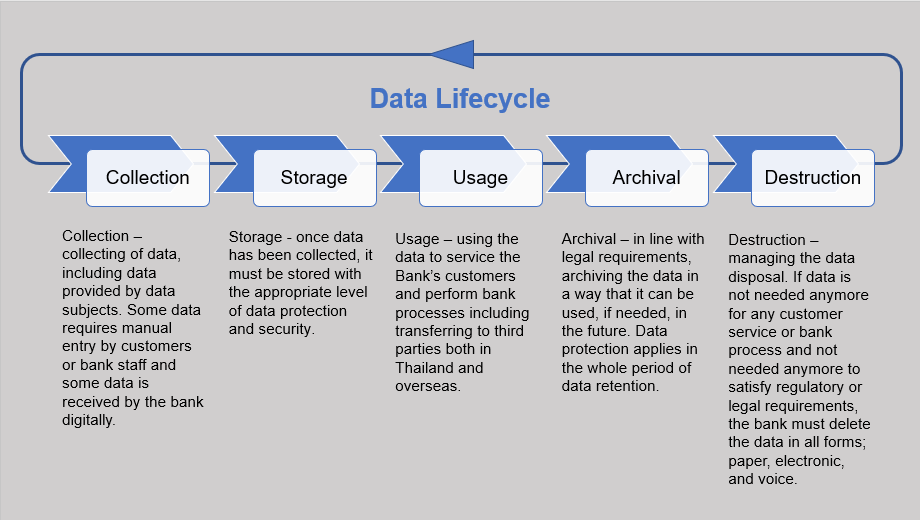The Essential Nature of Information Devastation in Upholding Computer System Safety And Security Services and Protecting Versus Unauthorized Gain Access To
In an era where information violations and identity theft are increasingly widespread, the value of reliable information damage can not be overemphasized. Different approaches, from data cleaning to physical devastation, offer as crucial safeguards versus unapproved access.
Value of Data Devastation
In a significantly electronic world, the significance of data damage can not be overemphasized. As organizations collect large quantities of sensitive info, the possible repercussions of failing to appropriately handle and dispose of that data come to be significantly severe. Data breaches, identification theft, and business reconnaissance posture considerable hazards, highlighting the need of efficient information devastation methods.

Additionally, as technology develops, so too do the approaches by which malicious actors seek to exploit sensitive details. Organizations needs to continue to be vigilant and positive in their information damage techniques to secure versus these developing risks. By focusing on information devastation, companies not only safeguard their properties yet also foster trust fund among customers and stakeholders, demonstrating a commitment to liable information administration and protection practices.
Techniques of Effective Information Devastation
To ensure the total and irreversible destruction of sensitive information, organizations can utilize a variety of efficient methods customized to their particular needs. Among one of the most typical methods is data wiping, which includes utilizing specialized software program to overwrite existing data several times, making recuperation essentially difficult. This is especially helpful for solid-state drives and tough drives, where conventional deletion approaches are inadequate.
An additional effective technique is degaussing, which uses strong electromagnetic fields to interfere with the magnetic domains on storage media, providing the information irretrievable. This technique is specifically fit for magnetic storage devices, such as disk drive and hard drives.
Physical devastation is also a viable alternative, entailing the shredding, crushing, or incineration of storage space tools. This technique guarantees that data can not be recuperated, making it excellent for organizations managing highly delicate details.

Compliance With Data Security Regulations
Organizations must not only concentrate on effective information devastation techniques yet likewise make certain compliance with information defense laws that regulate how delicate info is managed and gotten rid of. Following these laws is necessary for maintaining and guarding personal information client trust. Regulations such as the General Information Protection Guideline (GDPR) in the European Union and the Health And Wellness Insurance Coverage Mobility and Accountability Act (HIPAA) in the USA impose rigorous guidelines on information administration, that include demands for the safe disposal of delicate info.
To attain conformity, organizations have to apply extensive data damage plans that straighten with these legal frameworks. This consists of recognizing data that calls for destruction, developing methods for safe and secure methodsâEUR" such as shredding physical media or making use of software application that meets industry standards for data wipingâEUR" and maintaining detailed documents of devastation activities. Regular audits ought to be carried out to make certain adherence to these plans and to determine any possible areas for enhancement.
Failing to abide by data protection guidelines can result in significant lawful implications, including hefty fines and damages to an organization's reputation. For that reason, integrating conformity right into data destruction methods is not just a lawful responsibility however likewise a vital element of a robust info safety method.
Repercussions of Poor Data Handling
Poor information handling can cause extreme effects that prolong beyond immediate functional problems. Organizations may face significant financial losses due to data breaches, which usually result in pricey removal initiatives, lawful charges, and regulatory fines. These economic ramifications can strain resources and impede growth, inevitably impacting a company's lower line.
Additionally, inadequate data handling can significantly damage a company's online reputation. Consumers, partners, and stakeholders might lose rely on an entity that stops working to secure delicate info, bring about lowered client commitment and potential loss of business opportunities. This disintegration of trust fund can take years to reconstruct, if it can be brought back in all.
In addition, companies might deal with lawful ramifications occurring from non-compliance with data protection policies. Such infractions may cause charges and examinations, compounding the economic problem and further tainting the company's photo.
In the world of cybersecurity, insufficient data monitoring methods can produce vulnerabilities that make systems more prone to unapproved accessibility and cyberattacks. Ultimately, these consequences emphasize the critical value of executing robust information handling procedures to safeguard sensitive details and keep organizational integrity.
Best Practices for Secure Information Disposal


Firstly, information ought to be categorized according to its level of sensitivity. Delicate information needs much more extensive disposal methods, such as shredding physical records and utilizing sophisticated software application for electronic data wiping. Utilizing licensed information damage services ensures compliance with sector guidelines and standards.
Second of all, companies ought to apply a data disposal policy that mandates routine audits. This policy ought to describe the procedures for data retention and damage, ensuring that out-of-date data is disposed of without delay and firmly. Training workers on these procedures is vital to promoting a society of protection understanding.
Lastly, keeping thorough documents of disposed data published here boosts responsibility and supplies a clear audit path. This documentation ought to include the type of data destroyed, the method utilized, and the date of disposal.
Verdict
Adopting robust techniques such as information cleaning, degaussing, and physical destruction, alongside conformity with policies like GDPR and HIPAA, is essential for protecting delicate details. Overlooking appropriate data disposal practices can lead to serious consequences, including information violations and legal consequences.
In an age where data breaches and identity burglary are significantly common, the relevance of reliable data damage can not be overstated. data destruction. Data breaches, identity burglary, and company reconnaissance position significant risks, highlighting the necessity of effective data damage methods
Conformity with policies such as GDPR and HIPAA mandates that companies apply stringent data security actions, consisting of the safe top article destruction of data at the end of its lifecycle.
By focusing on data devastation, companies not only shield their assets yet also foster depend on amongst customers and stakeholders, showing a dedication to accountable information monitoring and safety and security techniques.
Organizations have to not only concentrate on effective information damage techniques yet likewise guarantee compliance with information protection regulations that control exactly how sensitive info is handled and disposed of.
Comments on “How to Incorporate Data Destruction Techniques into Your Cyber Security Strategy”